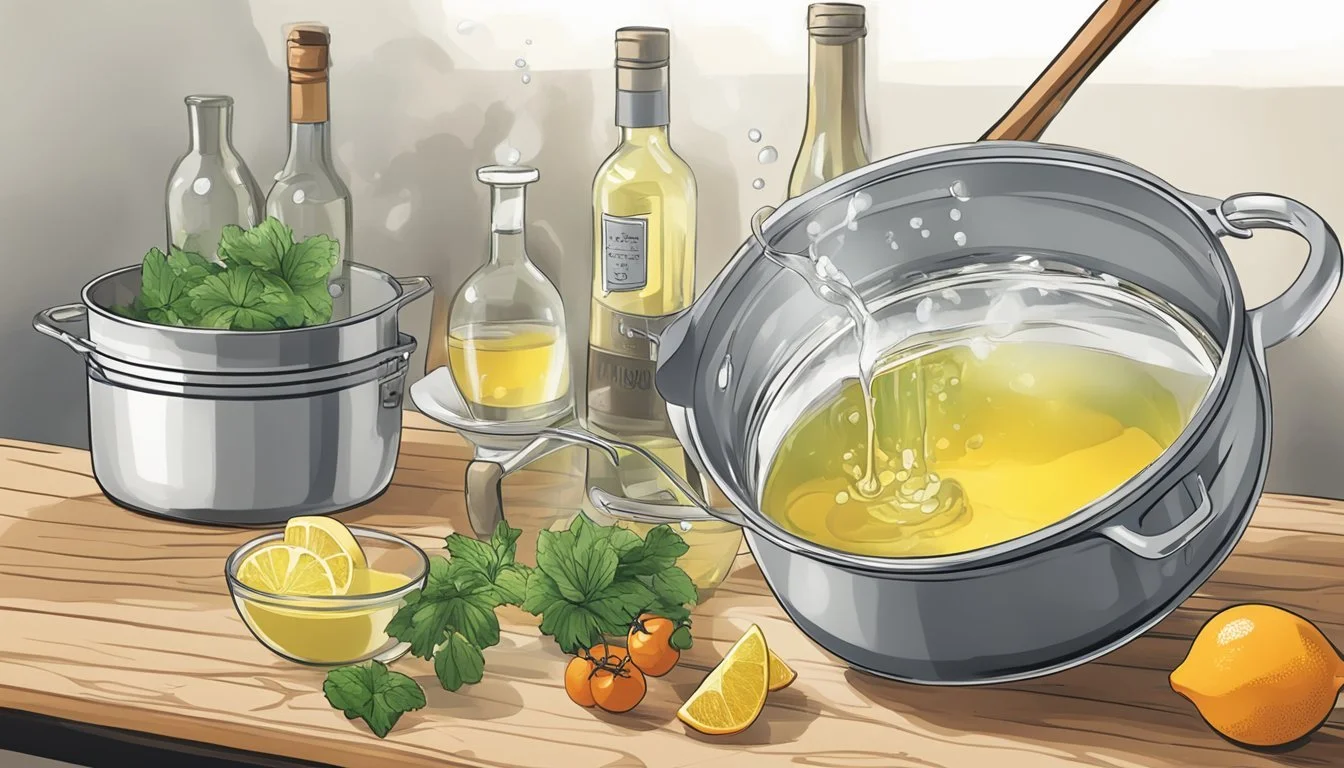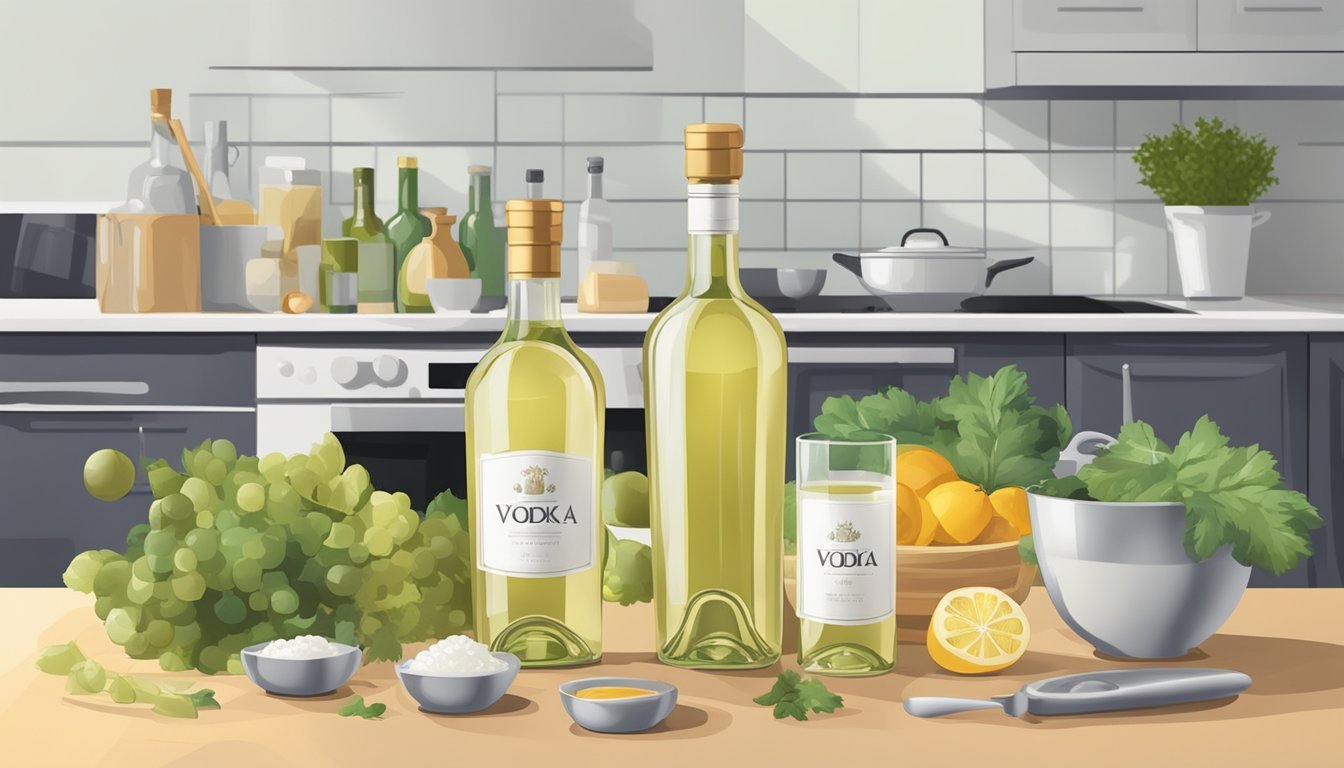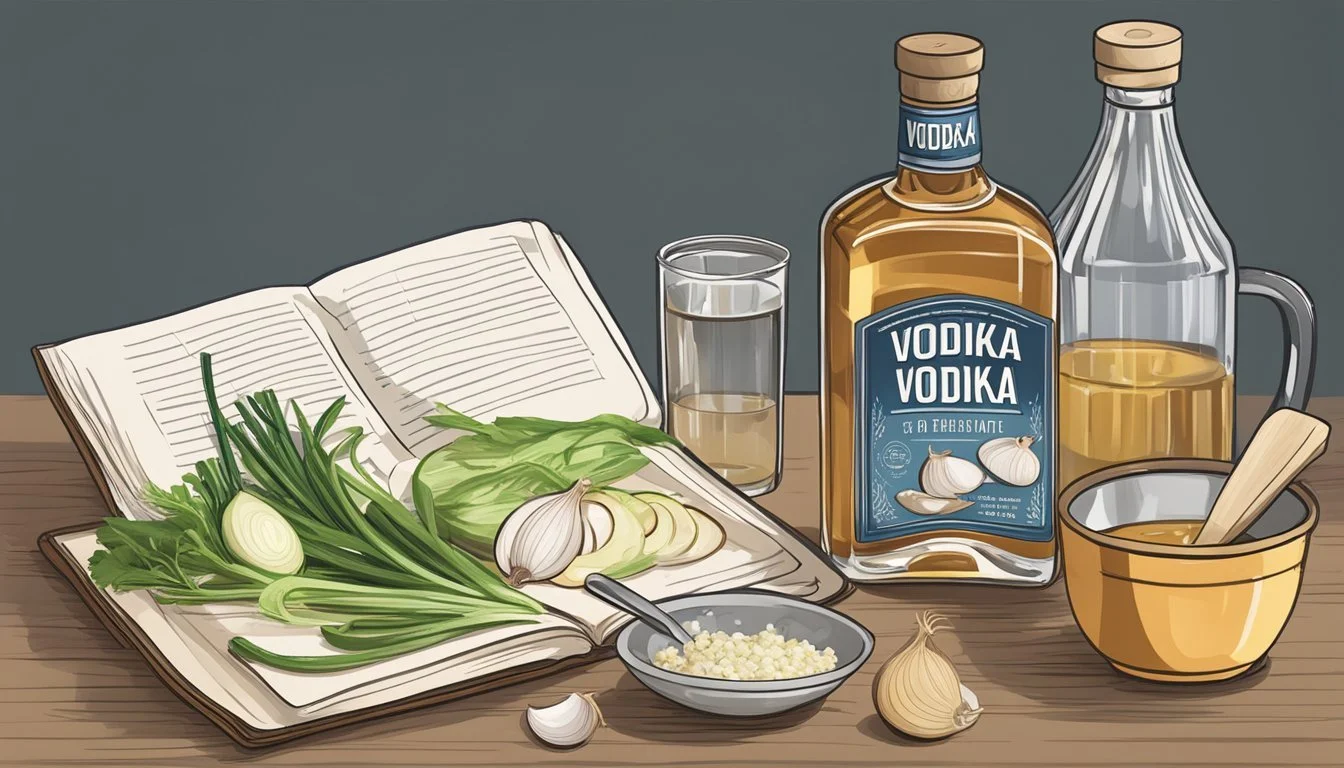How to Substitute Vodka for White Wine in Cooking
A Flavorful Alternative
Substituting vodka for white wine in cooking is a viable option that can be employed under certain circumstances, especially when one desires the distinctive flavor profile vodka can bring to a dish or when white wine is not available. While white wine is known for its ability to add acidity, complexity, and depth to a variety of recipes ranging from sauces to seafood dishes, (What wine goes well with seafood dishes?) vodka offers an alternative that imparts a different kind of flavor and can also help to release flavors that are soluble in alcohol. It is important to understand the role that white wine typically plays in cooking to properly substitute vodka and maintain the integrity of the dish.
In considering vodka as a substitute for white wine, one should note that vodka has a higher alcohol content and thus requires moderation in use to avoid overpowering the dish. The neutral flavor of vodka can enhance the existing flavors of the other ingredients without contributing the fruitiness or sweetness that is often associated with white wine. When swapping in vodka for white wine, it is advisable to use less than the amount of wine called for and to consider adding a splash of an acidic component, such as lemon juice or vinegar, to replicate the acidity that white wine would typically provide.
Moreover, the cooking process will evaporate most of the alcohol in vodka, leaving behind its crisp character which can complement a sauce or marinade. The substitution ratio can vary depending on the recipe, but a general guideline is to replace each cup of white wine with a quarter cup of vodka, adjusting the volume based on the desired flavor intensity and the other ingredients in the dish. This approach to using vodka can be particularly useful in creating sauces like the iconic vodka sauce, where the spirit is integral to the recipe.
Understanding the Role of White Wine in Cooking
White wine is a key ingredient in many recipes due to its unique properties that influence flavor, acidity, and aroma. It has a central role in augmenting and balancing dish profiles.
Acidity and Flavor Profiles
White wine offers a distinct tartness that can enhance the natural flavors of foods like seafood and poultry. Its acidity is crucial in recipes like risottos and pan sauces where it adds a brightness that balances the fat.
Alcohol Content and Cooking Techniques
The alcohol content in white wine, often between 9% and 16%, plays a significant role in cooking. It can help dissolve fats and release flavor compounds in foods such as mussels (What wine goes well with mussels?) and shrimp scampi (What wine goes well with shrimp scampi?). Cooking wine is also used in techniques like deglazing to unlock the flavorful browned bits from cookware.
Enhancement of Dishes
Using white wine in recipes can elevate the taste and complexity of the dish. For example, incorporating it into stews or sauces can deepen the flavors and create a more rounded profile.
The Color and Aroma Contributions
White wine adds not only a nuanced flavor but also contributes to the visual appeal and scent of a dish. It may lend a slight hue and a characteristic bouquet that can make a dish more inviting.
Non-Alcoholic and Low-Sodium Alternatives
For those avoiding alcohol or sodium, alternatives like non-alcoholic wine or low-sodium vegetable stock can be used. These options maintain the moisture level in the dish while reducing the alcohol content and sodium intake.
Brightening Foods with Acidic Ingredients
Acidic ingredients help to brighten dishes and add a layer of complexity to the taste. Lemon juice, for instance, can be an alternative to white wine for adding acidity without the alcohol.
Nutritional Considerations
While white wine is used sparingly in most dishes, it's important to be aware of its caloric and alcohol content. Its inclusion should be considered when preparing meals for individuals with dietary restrictions.
Culinary Traditions and Variations
Different culinary traditions leverage white wine in various ways, such as in French or Italian cooking where it's a staple ingredient. The type of white wine used might vary based on the regional recipe, such as a dry Sauvignon Blanc in a French dish or a rich Chardonnay in an Italian risotto.
Vodka as a Substitute
When using vodka as a substitute for white wine in cooking, it's important to understand how it compares to wine in terms of alcohol content and flavor, and to know when and how to properly use it in recipes.
Comparing Wine and Vodka
Alcohol content: While white wine typically contains an alcohol by volume (ABV) of 10-13%, vodka boasts a much higher ABV at around 40%. Flavor: Vodka has a more neutral flavor profile compared to the nuanced and variable flavors of white wine.
Benefits of Using Vodka
Complexity: The addition of vodka can bring a unique complexity to dishes, especially sauces where its high alcohol content helps release flavor compounds from other ingredients.
Clarity: Vodka does not alter the color of a dish, making it suitable for clear sauces and broths.
Considerations When Using Vodka
Alcohol content must be reduced through simmering to mellow out the strong punch and to prevent an overly alcoholic flavor.
The neutrality of vodka means it will not contribute the same depth of flavor as white wine.
Adjusting Acidity in Recipes
To mimic the acidity of white wine, it may be necessary to add an acidic ingredient, such as lemon juice, to the recipe.
Vodka in Various Cuisines
Vodka can be used across different cuisines but tends to shine in dishes that benefit from its clean, sharp taste without the need for wine's fruity undertones.
Non-Alcoholic Substitutes for Vodka
For a completely non-alcoholic version, options like non-alcoholic wine or diluted lemon juice can provide a similar effect without the use of alcohol.
Infusing Vodka with Flavors
Infusing vodka with herbs, spices, or fruits can add desired flavors when substituting for white wine, offering a customizable approach to replicating the wine's flavor profile.
Substituting in Cooking Techniques
When deglazing or marinating, vodka's high alcohol content can be an effective solvent, extracting flavors that would normally remain untapped.
Dealing with the Bitter flavor of Vodka
Due to its production process, vodka might impart a slight bitterness, which can be countered by carefully balancing the dish's sweet and acidic elements.
Viable Substitutes for White Wine
When cooking recipes that call for white wine, various substitutes can be employed to achieve similar flavor profiles or fulfill the wine's role in cooking, such as adding acidity, enhancing flavor, or providing moisture.
Broth as an Alternative
Substituting broth in place of white wine adds depth and richness to dishes. Each type of broth—be it chicken broth, vegetable broth, or others—brings its unique flavor, which should be chosen to complement the dish being prepared.
Using Vinegar for Acidity
Vinegar can replace the tanginess that white wine provides. Suitable options include apple cider vinegar, white wine vinegar, rice vinegar, and distilled white vinegar. Always use a smaller quantity of vinegar compared to wine to prevent overpowering the dish.
Choosing Citrus Juices
Lemon and lime juice are excellent for mimicking the zesty quality of white wine. They work well in lighter dishes and can be diluted with water to temper the acidity when necessary.
Sugary Liquid Substitutes
Sweet liquids like white grape juice, apple juice, or ginger ale can replicate some of white wine's sweetness, especially when a dash of vinegar is added to bring in a subtle sharpness.
Fortified Wines and Their Similarities
Fortified wines such as Marsala, dry vermouth, and regular vermouth share white wine’s alcohol content while also imparting unique flavors. These options are often used in marinades, sauces, and dessert recipes.
Substituting with Other Spirits
Other spirits, including gin, bourbon, rum, tequila, or whiskey, may be used cautiously as a white wine alternative, keeping in mind that each will add a distinctive taste to the dish.
Using Water to Retain Moisture
In the absence of other options, water is a viable substitute to maintain the moisture level in cooking, although it lacks the flavor-enhancing properties of white wine.
The Use of Non-Alcoholic Wine
Non-alcoholic wine provides the flavor profile of traditional wine without the alcohol, making it a suitable option for those avoiding alcohol in cooking.
Recipe Adjustments and Considerations
When replacing vodka with white wine in cooking, one must carefully consider the balance between flavors and aromas, ensuring they complement the dish without overwhelming its inherent taste profile.
Balancing Flavors and Aromas
The process involves a meticulous approach to maintain harmony between the ingredients. Vodka, typically neutral in taste, imparts a distinct sharpness and can enhance the sauce's overall flavor when used appropriately. Conversely, white wine introduces a layer of complexity with its fruit-driven acidity and subtle sweetness.
To adjust successfully, consider the following:
Flavor Profile: White wine varies from sweet to dry and can alter the dish's flavor profile significantly. It is advisable to select a wine that aligns with the desired outcome, usually a dry white wine for savory dishes.
Amount: Use a prudent hand when substituting to avoid overpowering the dish. A general guideline is to replace vodka with double the amount of white wine due to wine's lower alcohol content and more pronounced taste.
Cooking Time: White wine should be allowed to simmer longer than vodka to cook off the alcohol and marry flavors with the other ingredients.
Incorporation Techniques:
Gradually incorporate the white wine and taste frequently.
Be attentive to the dish's aroma, ensuring it remains balanced and not overly alcoholic.
Remember, the aim is to achieve a harmonious blend of scents and tastes that elevate the recipe rather than distract from its principal components.





